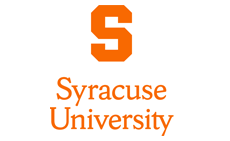Date of Award
12-20-2024
Date Published
January 2023
Degree Type
Dissertation
Degree Name
Doctor of Philosophy (PhD)
Department
Chemistry
Advisor(s)
John Chisholm
Second Advisor
John W. Tillotson
Subject Categories
Chemistry | Organic Chemistry | Physical Sciences and Mathematics
Abstract
One important cell signaling pathway is the PI3K pathway because it influences many key cellular functions such as proliferation and apoptosis. Among the enzymes that are involved in this pathway, the SH2-containing inositol-5’-phosphatase (SHIP) plays an important role by maintaining the balance of PI(3,4,5)P3 and PI(3,4)P2. SHIP activation promotes a higher rate of hydrolysis of PI(3,4,5)P3 and thus reduces the downstream activation of AKT, which influences many cell processes. Activation of SHIP using small molecules may be useful for certain diseases such as inflammatory disorders and some types of cancer. The synthesis and evaluation of a new class of sulfonamide SHIP1 activators was undertaken in order to evaluate the effects of these molecules on SHIP1 enzymatic activity. Additionally, studies have been performed on the lactonization of indole-3-butyric acids utilizing 2,3-dichloro-5,6-dicyano-1,4-benzoquinone (DDQ). While most C-H bonds are considered unreactive towards direct functionalization due to their strength and non-polar nature, DDQ can efficiently activate substituted indoles at the benzylic position. The resulting carbocation can then be trapped by a pendant carboxylic acid to form a lactone. In addition, the reaction was shown to proceed under catalytic conditions when manganese dioxide (MnO2) was used as the stoichiometric oxidant. This cyclization proceeds with a number of indole-3-butyric acids, and yields were generally good as long as the indole was electron rich and free of bulky substituents near the reacting benzylic carbon. Indole-3-butyric acids functionalized with electron withdrawing groups tend to give more moderate yields. Other aromatic substrates also participate as long as the aromatic ring is functionalized with electron donating groups. The investigation and synthesis of new chiral hypervalent iodine (CHI) catalysts was also undertaken. CHI catalysts have been shown to be effective in a number of asymmetric oxidations in the last two decades. CHI reagents are more environmentally friendly than transition metals and provide an alternative, organocatalytic approach to enantioselective oxidations of alkenes and aromatic systems. An important application of CHI catalysts is dearomatization since it provides access to complex cyclohexadiene ketones or imines from inexpensive aromatic starting materials. This project is focused on the dearomatization of functionalized anilines using chiral hypervalent iodine catalysts. Secondary interactions between aniline and the catalyst have been investigated in order to evaluate the relationship between structure and enantioselectivity. Additionally, the use of CHI catalysts towards the synthesis of spirooxazoline ring systems was briefly evaluated. These ring systems are present in a number of natural products.
Access
Open Access
Recommended Citation
Nixarlidis, Christos, "Synthetic Studies on SHIP Activators and New Oxidative Methods utilizing DDQ and Hypervalent Iodine Catalysts" (2024). Dissertations - ALL. 2035.
https://surface.syr.edu/etd/2035


